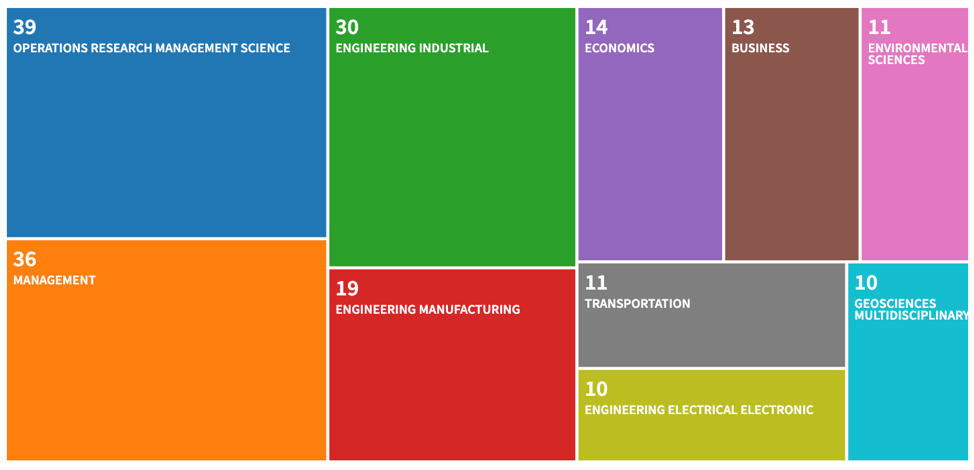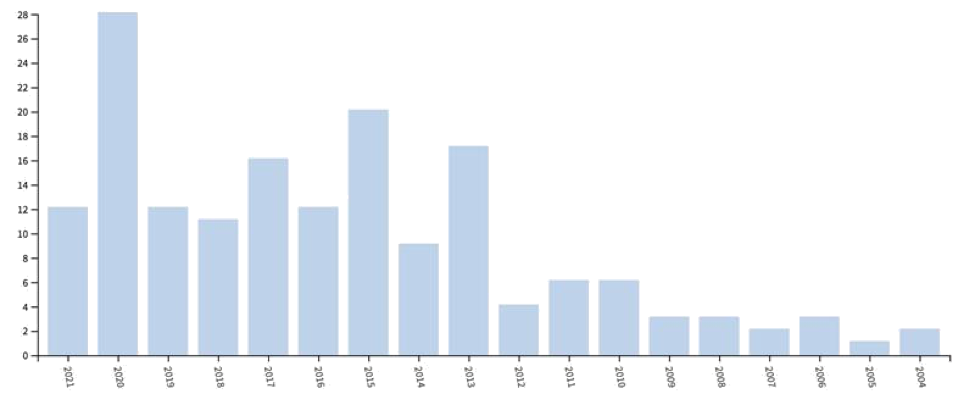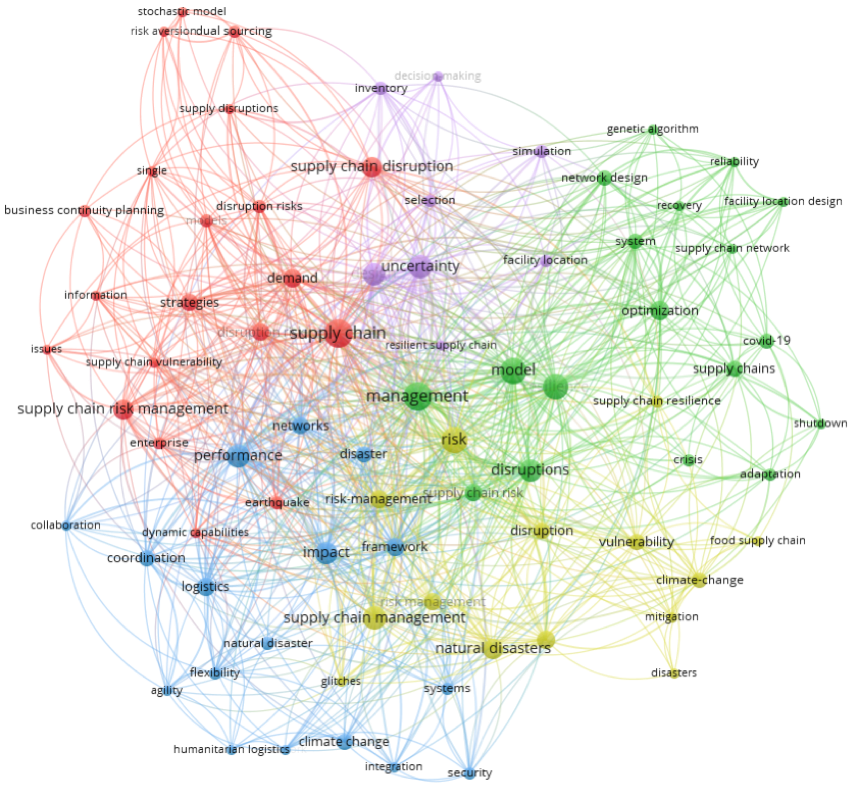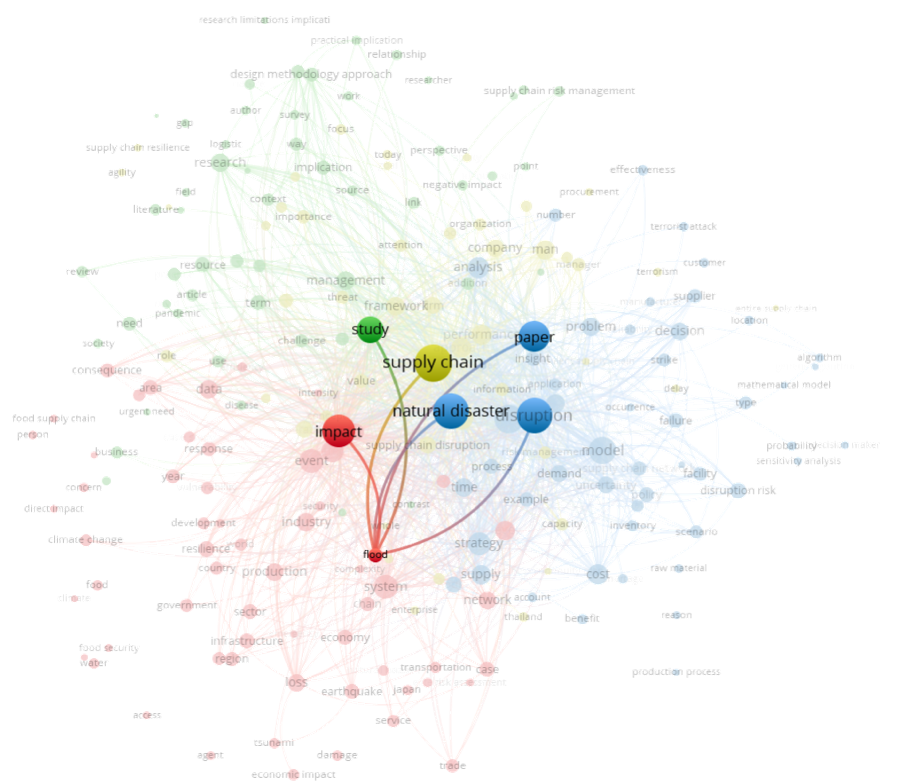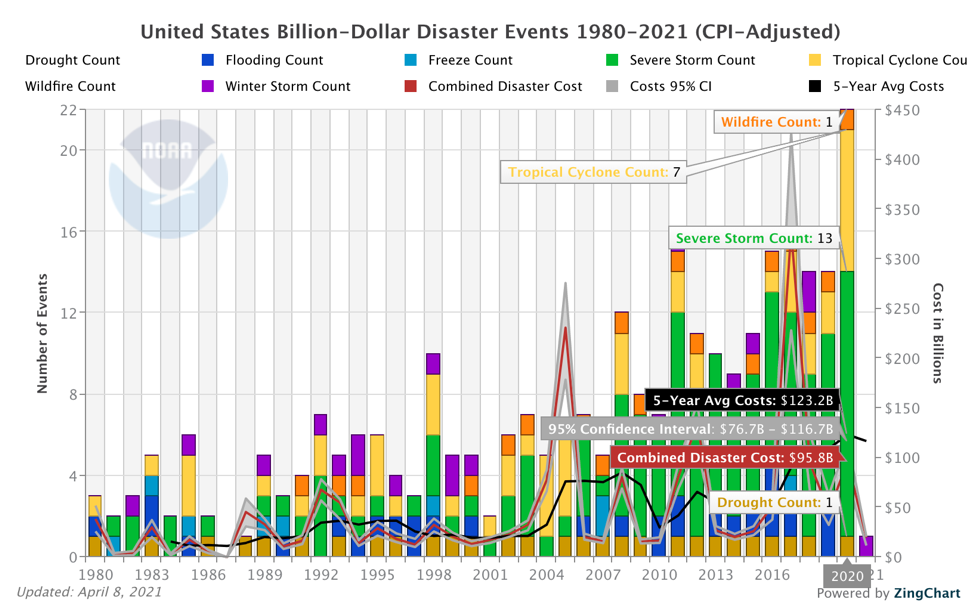Actionable Information – Research Briefs – 4 – Literature review on the impact of natural threats on Supply Chains
Suggested citation:
Allen, A., Medina-Cetina, Z., Pompelli, G., Cochran, M., Alvarado, J. & Z-Losoya, E. (2021). Actionable Information – Research Briefs – 4 – Literature Review on the Impact of Natural Threats on Supply Chains. https://r7-cbts-sgl.engr.tamu.edu/actionable-information-research-briefs-4-literature-review-on-the-impact-of-natural-threats-on-supply-chains/
@misc{Allen2021A,
author = {Allen, Alexi and Medina-Cetina, Zenon and Pompelli, Gregory and Cochran, Matthew and Alvarado, Juan Pablo and Z-Losoya, Enrique},
title = {Actionable Information - Research Briefs - 4 - Literature review on the impact of natural threats on Supply Chains},
url={https://r7-cbts-sgl.engr.tamu.edu/actionable-information-research-briefs-4-literature-review-on-the-impact-of-natural-threats-on-supply-chains/},
year={2021},
month={May}
}The bullet points that follow are a summary of the main ideas expressed by various natural threat related sources. The first section summarizes a Web of Science literature search and the analytics from it. The second section is comprised of research articles compiled from the Texas A&M Library website regarding the impact of natural hazards/threats on various supply chains, why companies have failed to fully prepare themselves for supply chain disruption, what companies are doing to mitigate current and prevent future disruptions, and what impacts by natural hazards we may likely see in the future on supply chains. The third section looks at recent (2021) natural disasters and their impact on supply chains. This research brief does not include additional interpretations or recommendations regarding supply chain operations or disaster preparedness based on the summarized information.
Section 1
| # | Action | Search | Number of Search Results |
|---|---|---|---|
| 1 | Topic Search | Natural AND threat AND supply AND chain NEAR impact | 9 results |
| 2 | Topic Search | Natural AND hazard AND supply AND chain NEAR impact | 14 results |
| 3 | Topic Search | Natural AND disaster AND supply AND chain NEAR impact | 68 results |
| 4 | Topic Search | Natural AND threat AND supply AND chain NEAR disruption | 11 results |
| 5 | Topic Search | Natural AND hazard AND supply AND chain NEAR disruption | 8 results |
| 6 | Topic Search | Natural AND disaster AND supply AND chain NEAR disruption | 115 results |
| 7 | Combination | 1 OR 2 OR 3 OR 4 OR 5 OR 6 OR 7 | 167 results |
- By combining the terms threat/hazard/disaster and interruption/disruption in various configurations, 167 results were obtained that related these terms to supply chains with the intention of obtaining papers that discuss how natural hazards impact supply chains (Table 1).
Figure 1: A visual representation of the top 10 Web of Science Topics covered by the search results obtained from Action #7 listed in Table 1.
- Most of the papers analyzed from the Web of Science search (Table 1) are related to operations research management science and management with fewer papers related to industrial and manufacturing engineering (Fig. 1). Eleven of the papers were on the topic of environmental sciences and ten were related to the multidisciplinary geosciences.
Figure 2: A chart based on the number of papers per year from 2004 (earliest sourced paper) to the current year (2021).
- Most of the interest in the impact of natural hazards on supply chains appears to have started in 2013 when the number of papers published (Fig. 2) rose from 1-6 papers a year to 17 papers.
Figure 3: Keyword co-occurrence network generated from the 167 papers obtained in the Web of Science search (Table 1).
- Specific natural hazards were not observed in the keywords of the 167 reference papers (Table 1) above the threshold level. Only general terms such as natural disasters, disasters, and climate change were observed among the keywords.
Figure 4: An abstract semantic analysis generated from the 167 papers obtained in the Web of Science search (Table 1). The links which include the terms hurricane and tsunami are highlighted.
- After lowering the threshold to 5 mentions in the abstracts from the 167 papers, the terms earthquake and tsunami appeared in the semantic analysis (Fig. 4). The link between the terms indicates that most of the papers included both of these terms in their abstracts and it was determined that a majority of these papers discussed the 2011 earthquake and tsunami in Japan.
Figure 5: An abstract semantic analysis generated from the 167 papers obtained in the Web of Science search (Table 1). The links which include the term flood are highlighted.
- The term flood was observed in the abstracts about as often as the term earthquake. A number of the papers which mentioned floods discussed the 2011 flooding in Thailand.
Section 2
- Back-up facilities need to be built to provide support to main facilities and store materials and documents during a disaster and should be located close enough to provide support in a timely manner while also being out of range of being impacted by the same disaster (Ratick et al., 2008).
- Transportation infrastructure resilience is based on its ability to withstand stress, maintain baseline services, provide restoration to the system, and reduce the consequences of failure with most resiliency studies only focusing on roadways, not other modes of transportation (Pitilakis et al., 2016).
- Senior supply chain professionals from various industries surveyed identified social-related risks as less impactful than environmental or economic-related risks and endogenous risks, resulting from inside the company, are more important than exogenous risks, resulting from outside sources (Giannakis & Papadopoulos, 2016).
- Supply chain networks often fail to acknowledge the substantial indirect losses from natural disasters such as business interruptions, temporary relocating/rerouting of materials, and buyers turning to alternative suppliers and thus businesses are underinsured for such losses. Most of uninsured losses from natural disasters are absorbed by the government or large businesses (Smith, 2013).
- Sustainable supply chains reduce the demand for virgin materials where possible and aim to reuse, remanufacture, and reduce production waste (Sarkis et al., 2020).
- Supply chains need to be more agile (be able to switch their main product to ones that are in high demand, be more transparent (to make upstream bottlenecks apparent so downstream entities are not caught off-guard), have more flexibility in their subcontractor agreements (to prevent business interruptions due to a lack of suppliers), diversify their locations over cost control, and plan more thoughtfully for potential shifts in downstream demand.
- Those most vulnerable to natural disasters tend to be the most impacted and supply chain resilience shouldn’t be prioritized over the economic and environmental well-being of the communities in which their operations are based.
- Corporations don’t assign much importance to natural disaster preparedness due to competing business issues, a lack of recognition of disaster vulnerability, and the assumption that the service and government sectors are responsible for disaster response and recovery (Hale & Moberg, 2005).
- To create a resilient supply chain, there needs to be a reduction in dependence on a few suppliers, an increase in upstream visibility to reduce bottlenecks, the ability to substitute parts with those from a different supplier and/or the ability to transfer production of parts to other suppliers when mass production is needed (Haraguchi & Lall, 2015).
- Companies impacted by supply chains with inadequate insurance coverage for natural disasters are more likely to lose business to alternative suppliers after recovering from business interruptions. And even those that do not experience physical damage from natural disasters can experience the same severity of supply chain disruptions if they are not well-prepared to source materials/services from other subcontractors.
- Even after natural disasters have occurred, most industries and investors choose not to move operations to a less vulnerable area due to profitable economic incentives in a region. However, governments need to be aware of the risk to local communities if businesses do choose to move their operations out of the region and work to lessen the impact of weather-related events where possible through better urban planning and providing insurance against certain events, such as flooding.
- The most comprehensive risk index is the World Risk Index (WRI) which considers exposure, vulnerability, adapting capacities, and the coping ability of a society to recover from natural hazards (Aguila & ElMaraghy, 2018).
- Ambiguity is often not accounted for in risk assessments because unlike risks, it cannot be assigned a probability distribution due to the inherent lack of situational clarity involved in decision-making (Gunessee & Subramanian, 2020).
- Much of companies’ inaction at the beginning of COVID-19 is due to an overconfidence in the resilience of supply chain, an underestimation of the severity of the supply chain interruptions, and an unwillingness to change. Any companies were not prepared for new events, such as COVID, since their risk preparedness is based on historical learning.
- Some of the organizational changes made to supply chains as a result of COVID-19 include: stockpiling, blending local and global supply chains and increased transparency and collaboration between companies.
- Increased global temperatures due to climate change is expected to negatively impact both vital food and feed crops as well as livestock animals. Higher temperatures can cause a reduction in protein and mineral content, increase toxicity of certain species, allow pests, weeds, and diseases to become more resilient and destructive, and cause increased heat stress to livestock (Godde et al., 2021).
- Incidents of food poisoning are likely to increase putting additional strain on the health care infrastructure and labor productivity is expected to decrease as well due to a reduction in safe working times during the day and higher rates of incidents to agricultural migrant workers who are less likely to complain about unsafe working conditions.
- While in smaller countries keeping livestock may be a valuable asset to create income diversification, in more developed countries, smallholders are likely to be increasingly pushed out of the market by larger operations which are more vulnerable to transportation and demand disruptions due to an inability to hold onto inventory.
- Increases in temperature, humidity, and storm events are expected to put an increased strain on infrastructure, machinery, etc. leading to increased operation and maintenance costs for critical industry infrastructures.
| Most Mentioned Natural Hazards | |
|---|---|
| Flooding | Tsunami |
| Fire Regime | Temperature |
| Earthquakes | Surges |
| Hurricane/Tropical Cyclone | Greenhouse Gas Concentration |
| Storms | Sea Level |
| Drought | Volcanoes |
| Rainfall |
Section 3
Figure 6: Chart used to visualize the frequency and cost of billion-dollar weather and climate events using an interactive time series (Environmental Information (NCEI), 2021).
- U.S. natural disaster events costing at least a billion dollars (Figure 6) in damages were at an all-time high for 2020, but the combined cost of these disasters was less than other notable years such as 2005 and 2017 where Hurricanes Katrina (landed at New Orleans) and Harvey (landed at Houston), respectively, caused extensive damage. On average, the cost of such disasters has been increasing steadily since 1980 (Altay & Ramirez, 2010).
- The semiconductor supply chain is particularly vulnerable to natural disasters because almost all of the manufacturing operations (92%) are located in Thailand’s industrial park which is prone to intense flooding and prolonged droughts. More than 50 steps involved in producing the chips making process have two thirds of their operations concentrated in a single region. These chips are an integral part of computer, phone, and automobile manufacturing as well as for other industries (Nellis, 2021).
- Natural disasters can bring the pharmaceutical supply chain to a halt, as seen recently during Winter Storm Uri in Texas, as freights are prioritized for food and drink deliveries rather than vaccines. Texas, which is a major trucking artery for the surrounding states, experienced an almost state-wide freeze that caused widespread power outages and broken water lines. During the weeklong freeze, vaccine shipments decreased by a third and dwell time for shipments jumped more than 300%. The pharmaceutical company is primarily stalled by natural hazards that shut down parcel terminals and courier operations as this is the main distribution method for many supplies (Spinner, 2021).
- Exports from Texas during this period also decreased by 21% leading to a nationwide decrease of 2.6%. The current pandemic has also seen shipment delays as a result of port congestion, caused by an increase in pandemic-related restriction and labor shortages, container shortages, and an increase in shipping rates.
- Widespread, such as hurricanes, as well as localized yet intense disasters, such as tornadoes, can both cause major damage to structures due to the high winds. In 2021, Alabama was hit by both a hurricane as well as 30 tornadoes leading to extensive damage to roofing leading to a shortage of both shingles and licensed contractors (Horton, 2021).
- Floods, droughts, and extreme temperatures have been increasing in frequency and intensity in the past 50 years. The most heavily impacted crops are cereal and feed crops which make up the majority of diets for people and livestock, respectively (Europe’s Drought-Induced Crop Losses Tripled in 50 Years, Threatening Future Global Food Supply Chain, 2021).
- Increase in the demand of palm oil in multiple products ranging from food to pharmaceuticals has led to increased deforestation, erosion, and flood severity in Indonesia. More severe flooding in turn waterlogs the palm oil plants creating a positive feedback loop as more land is needed to maintain the current demand (Perugia, 2021).


